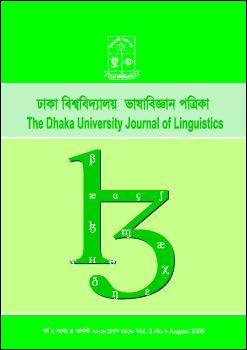Outlines of Bengali Phonology in the light of Generative Phonotactic
Keywords:
Well-formedness conditions, Epenthesis, Deletion, Substitution, Mechanism of repairAbstract
According to the theory of G(enerative) P(honotactic) (elaborated in Singh 1984, 1990), a phonemic inventory and a list of the W(ell)-F(ormedness) C(onditions) in addition to three hierarchically arranged strategies (Assimilation/ Substitution > Epenthesis > Deletion) to repair the sequences that violate these WFCs represent the essentials of a phonological description. For instance, the phonology of Panjabi, Chittagonian and Walpiri has, each, a WFC which bans the cluster /sk/ in onset. If these languages must adapt the English loan word school, then, Panjabi and Chittagonian repair it with epenthesis. In Walpiri, the word becomes /kul/ through deletion because no syllable begins with a vowel in this language, and its phonemic inventory lacks fricatives (/f/, /s/, /z/, etc.). The present is an exhaustive account of the phonology of Bengali in the light of GP.
Keywords: Well-formedness conditions; Epenthesis; Deletion; Substitution; Mechanism of repair
DOI: 10.3329/dujl.v2i4.6901
Dhaka University Journal of Linguistics Vol.2(4) August 2009 pp.93-114
Downloads
412
431

